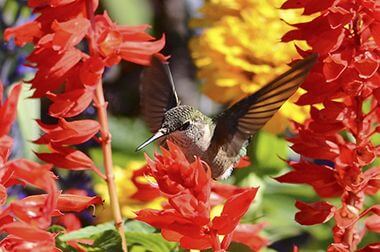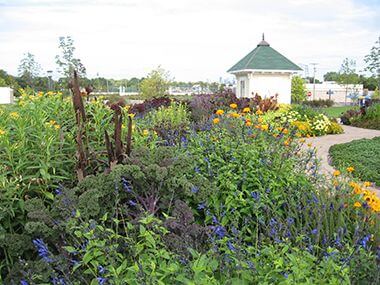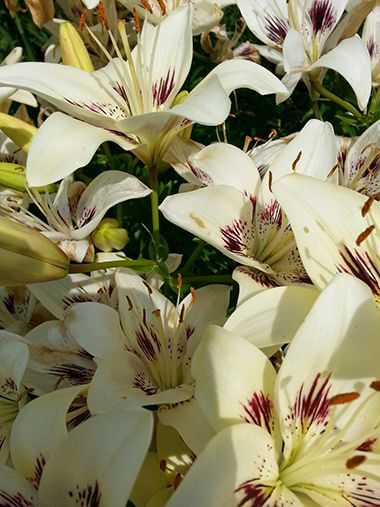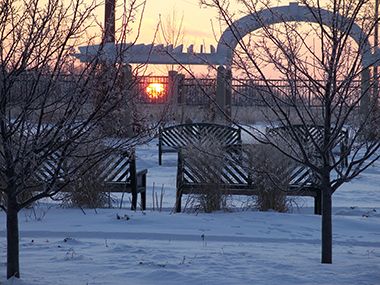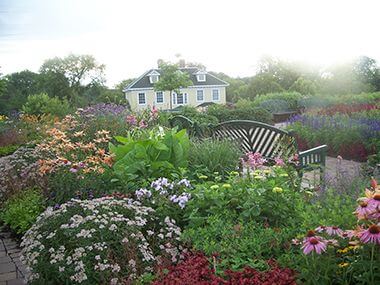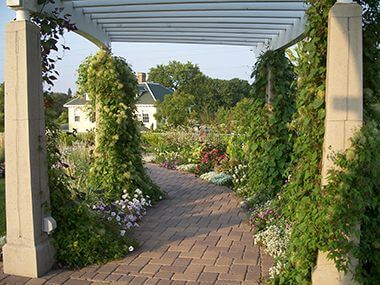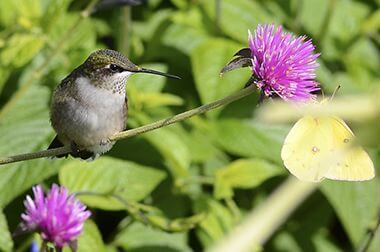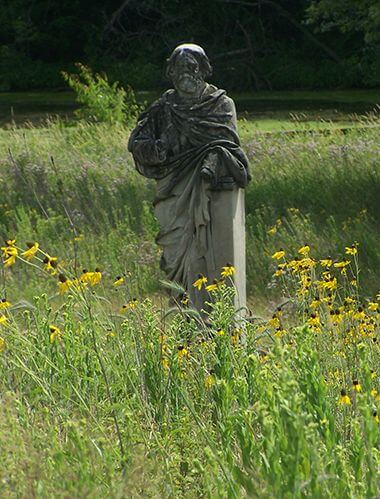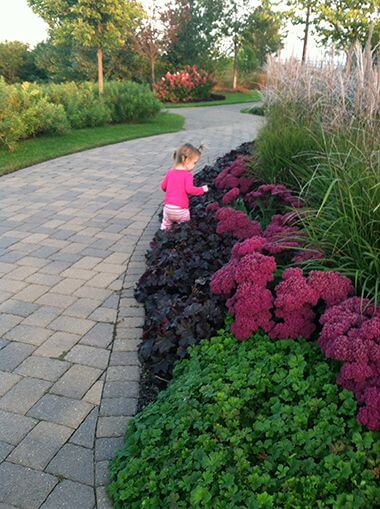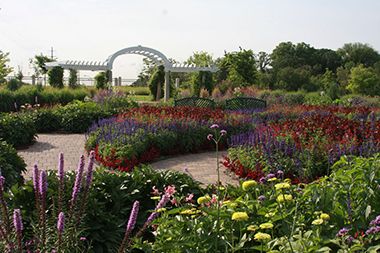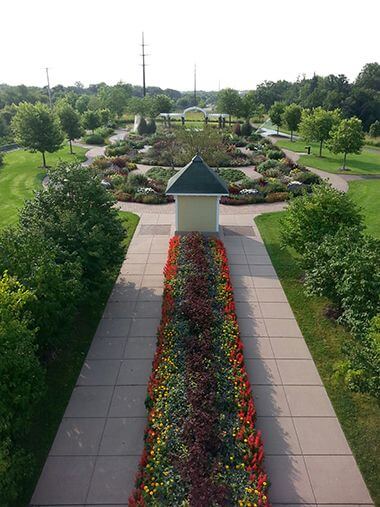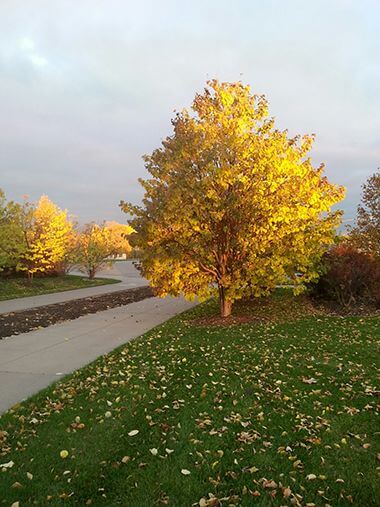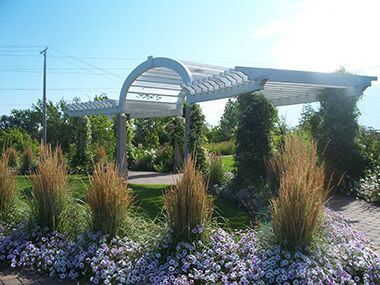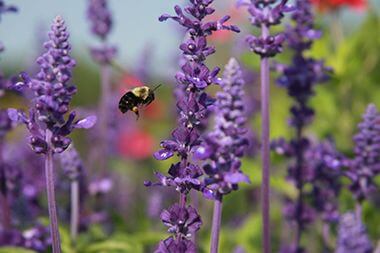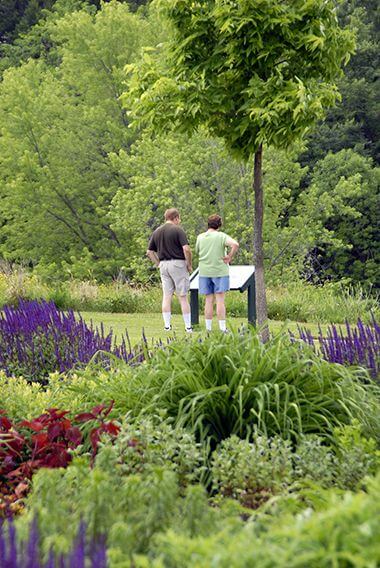Address
3933 E Minnehaha Parkway
Minneapolis, MN 55417
Contact
Phone: 612-230-6400
Email: info@minneapolisparks.org
Garden Hours
6 am-10 pm
Park Hours
6 am-midnight in developed areas
6 am-10 pm in undeveloped areas
Ordinance PB-2-33
Plan Your Route
Activities & Amenities
Activities
View All Garden Volunteer Opportunities
Good to Know
The Garden is located on the northwest side of Minnehaha Regional Park and covers the land bridge over Highway 55/Hiawatha Avenue.
Peak Viewing: June through September
Amenities
- Parking Lot
- Biking Path
- Drinking Fountain
- Garden
- Public Art
- Walking Path
Close to:
- Bike Path
- Minnehaha Falls
- Minnehaha Park Pavilion (covered shelter, bathrooms, drinking fountain, Sea Salt Eatery)
- Public Art
- Picnic Area
- Walking Path
Glorious Gardens
From grand expanses to hidden gems, gardens throughout the park system offer flowers, history, sculpture, community hubs and more.
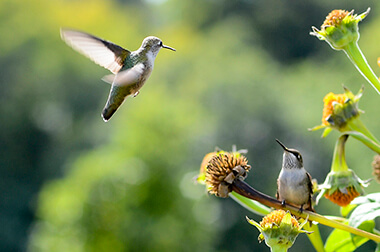
Garden Details
Longfellow Gardens was completed in 2005 and is home to numerous trees, shrubs, perennials and annuals. The Garden is graced with an arbor, providing a beautiful backdrop for weddings and other special events and provides a stunning view of the downtown skyline.
Surround yourself with beauty and enjoy green gardening in the heart of the city. No synthetic pesticides (herbicides, fungicides, insecticides) are used here. The goal at Longfellow Gardens is to use sound cultivation practices that promote healthy ‘living’ soil and in turn produce healthy plants. Pesticides can actually create more work in the garden as they disrupt the natural balance within the soil. Soil, plants, animals, insects, and micro-organisms all exist in a complex web of interaction that is disrupted by chemical interference.
Compost is worked into various beds in the spring and leaves from the past fall are used to mulch the garden beds. Leaf mulch breaks down quickly and contributes to soil nutrients and supports healthy soil microbial life. If fertilization is deemed necessary in the garden beds or surrounding turf it will be fertilizer derived from natural sources. Tilling the soil in annual beds is alternated yearly with hand turning so as to not compromise soil structure. Healthy green spaces start from the ground up. Healthy soil for healthy plants!
Plants are chosen not only for their aesthetics but also their disease resistance, tolerance of site conditions, and their ability to attract beneficial insects and pollinators. One very important aspect in any gardening program is choosing the right plant for the right place.
A certain tolerance level of weeds is acceptable. Weeds do compete with the desirable plant for nutrients, H20, and sunlight but some weeds are important to beneficial insects and pollinators and some contribute to overall soil health. The main goal is not complete elimination of a certain species but to keep them at an acceptable level. Weeds in the garden beds have always been manually pulled and this practice will continue. Alternative methods are being explored for weeds in the brick pathways. Currently a torch is being used to kill the weeds with heat/fire.
Subtle changes as plants mature throughout the season make each visit special. Each year new annual designs complement the trees, shrubs, and perennials that grace the garden area.
Going West towards the creek, a gentle slope of prairie flowers and grasses transitions between the land bridge’s sedate beauty and the ”wild” creek’s edge.
Near the creek, native shrubs, flowers, and grasses were planted to stabilize the shoreline and provide wildlife-friendly habitat.
Rentals & Permits
Annual Patron Parking Permit: Enjoy parking privileges in specially designated spaces at some of our most popular regional parks. View parking permit details.
Outdoor Weddings: Make your outdoor ceremony unique and memorable. View wedding permit details. Wedding Ceremony Application [PDF]
Filming and Photography Permit: The Minneapolis park system offers unique and beautiful back drops for any photo shoot or filming location. Application [PDF]
Parkway Use: You must obtain a permit for special use of the parkway including closures, and dumpsters, trucks, limousines or carriages on the parkway. View parkway permit details. Permit Application [PDF]
History
Name: The park is named for the zoo and gardens that once existed on the site, which were owned and operated by Robert “Fish” Jones. He named his attraction for Henry Wadsworth Longfellow whose poem The Song of Hiawatha made nearby Minnehaha Falls world famous.
Acquisition and Development
The park board acquired title to the land of Longfellow Garden in 1924, but it didn’t take undisputed possession of the land until 1936. The terms of the acquisition by the park board had led to a dispute over ownership.
The story of the property and the dispute really goes back to the early 1890s, shortly after Minnehaha Falls was acquired by the park board in 1889. In the years after the acquisition, the park board accepted the donation of several animals that were put in pens in the lower glen east of the falls. Throughout the 1890s the park board accepted as gifts, or purchased for small sums, many animals for what became an unofficial zoo. In the words of William Folwell, who was president of the park board through most of the 1890s, the policy of operating a zoo had developed “silently.” More pens were built, including a bear pit, and a wide variety of animals and birds were accepted for the zoo, including some, such as sea lions and an alligator, that were not native species. Many of the animals were housed in winter in the park board’s barns at Lyndale Farmstead. The alligator spent its winters at Richard Mendenhall’s greenhouse. By the late 1890s the zoo had grown to the point that Folwell speculated that more people went to Minnehaha Park to see the animals than the falls.
The issue of operating a zoo came to a head in 1906 when long-time park superintendent William Berry retired and was replaced by Theodore Wirth. Wirth was not a fan of animals in his parks or his warehouse in winter. He also expressed his sympathy for animals that were caged in too-small spaces. Fortunately for Wirth, a Minneapolis fish seller, Robert “Fish” Jones, who had collected a menagerie of animals at his shop on the site of the present basilica, had acquired land next to Minnehaha Park to house his animals and open a zoo. His collection was no longer welcome in his old neighborhood.
Jones agreed to take many of the park board’s animals in 1907 and add them to his own. The park board gave all its animals to Jones except the deer, elk and bear which could live year round in the park—and did until 1923. One condition of the park board’s deal with Jones was that he had to offer free admission to his zoo one day a week.
Jones created Longfellow Zoological Gardens where people could wander about his gardens accompanied by sea lions, ride a camel and attend lion-taming shows in an arena. To add to the attraction Jones built for himself a house on the property, a replica of Henry Longfellow’s house in Cambridge, Massachusetts. He even raised money to commission a statue of Longfellow that adorned his garden.
Despite complaints from neighbors about the sounds and smells of a zoo, the first mention of the park board’s desire to get rid of the zoo came in Wirth’s annual report of 1922. Noting the demands of the neighborhood for a playground, Wirth urged the board to acquire the property of the zoo, suggesting that the park board make an offer on the property and allow Jones to remain on the property for life. One reason for the lack of urgency in the proposal, according to Wirth, was the shortage of funds to create and maintain another playground. That could be done later. Wirth also suggested that the city needed a zoo and proposed finding another spot in the parks— perhaps the southwest portion of Glenwood (Wirth) Park—for a zoo if a private zoological society could be formed to raise funds to develop and maintain the zoo. Wirth believed that operating a zoo was beyond the means of the park board.
In 1924, a year after it disposed of the remaining animals in Minnehaha Park to create a new picnic ground, the park board voted to condemn the land of Longfellow Gardens. Appraisers were appointed—twice—to determine the value of Jones’s land, but neither appraisal was satisfactory to both parties. A compromise was reached. Jones would donate his land to the park board, at a value of $75,000, which would make his land tax exempt. In return he would retain the right to occupy the property for ten years.
The same year Wirth proposed sinking a deep well in Longfellow Garden to generate water for a pleasing flow over Minnehaha Falls. The next year he took his proposal a step further, suggesting the creation of a 4.5 acre “lakelet” along Minnehaha Creek next to Longfellow Garden by damming the creek at Hiawatha Avenue. In the plan he presented for the project the land of Longfellow Garden is designated as “future playground.” The deep well was dug and the creek was dammed in 1926. Wirth credited the reservoir with creating a “fairly good” supply of water to the falls.
In 1930 the great showman and entrepreneur Robert “Fish” Jones died and his property was inherited by his daughter. The park board’s annual report of 1930 contained a photo of Jones wearing his signature top hat and Wirth suggested that the land be renamed R.F. Jones Park to honor him. Upon the expiration of the ten years Jones had rights to the property, his daughter contested his donation of the land. Although the courts denied her claims, it wasn’t until more than a year later, in early 1936, that the park board actually took possession of the land.
Almost as soon as it did, it leased Jones’s former home, Longfellow House, to the Minneapolis Library Board for use as a branch library. With a thirty year lease on the building, the library board opened the Longfellow Branch Library in 1937. The statue of Longfellow remained where it stood and a playground was never built on the land.
The land became the center of one of the great controversies in park history in the 1960s when the state proposed to build a freeway on Hiawatha Avenue from downtown to the airport. State plans called for an elevated freeway to cross over the creek, although a tunnel under the creek was also considered. The park board objected strenuously to the plan and hired its own consultants, who proposed instead that the freeway be built to loop around the western edge of Longfellow Garden. The problem with that plan, which generated heated opposition in the neighborhood, was that it would have required the condemnation of many more homes and businesses. The park board sued to stop the state’s highway plan, but lost its case in both district court and the state supreme court. In 1968 the park board appealed its case to the United States Supreme Court, but before the case could be heard the Supreme Court ruled in a related case from Nashville that park land could not be taken for highways. That decision established a precedent and the state dropped its elevated freeway plan.
When plans were revived for a highway on Hiawatha Avenue in the 1990s, the highway department and the park board agreed on a modified tunnel plan for the road. The highway would pass above the creek to avoid disturbing the creek bed, but a land bridge would be created over the highway. The result is the present Longfellow Gardens, which was created over the highway tunnel in 2003. The steep slope created by the land bridge over the tunnel was seeded with native flowers and grasses.
The construction of the highway required, however, that the Longfellow House be moved. The library board had stopped using the house as a branch library when its lease expired in 1968. To accommodate the new highway, the house was moved east of Hiawatha Avenue and restored. It is now an information center for the Grand Rounds and is used as offices by the Minneapolis Parks Foundation.
The statue of Longfellow remains in its original location.
Park history compiled and written by David C. Smith.








